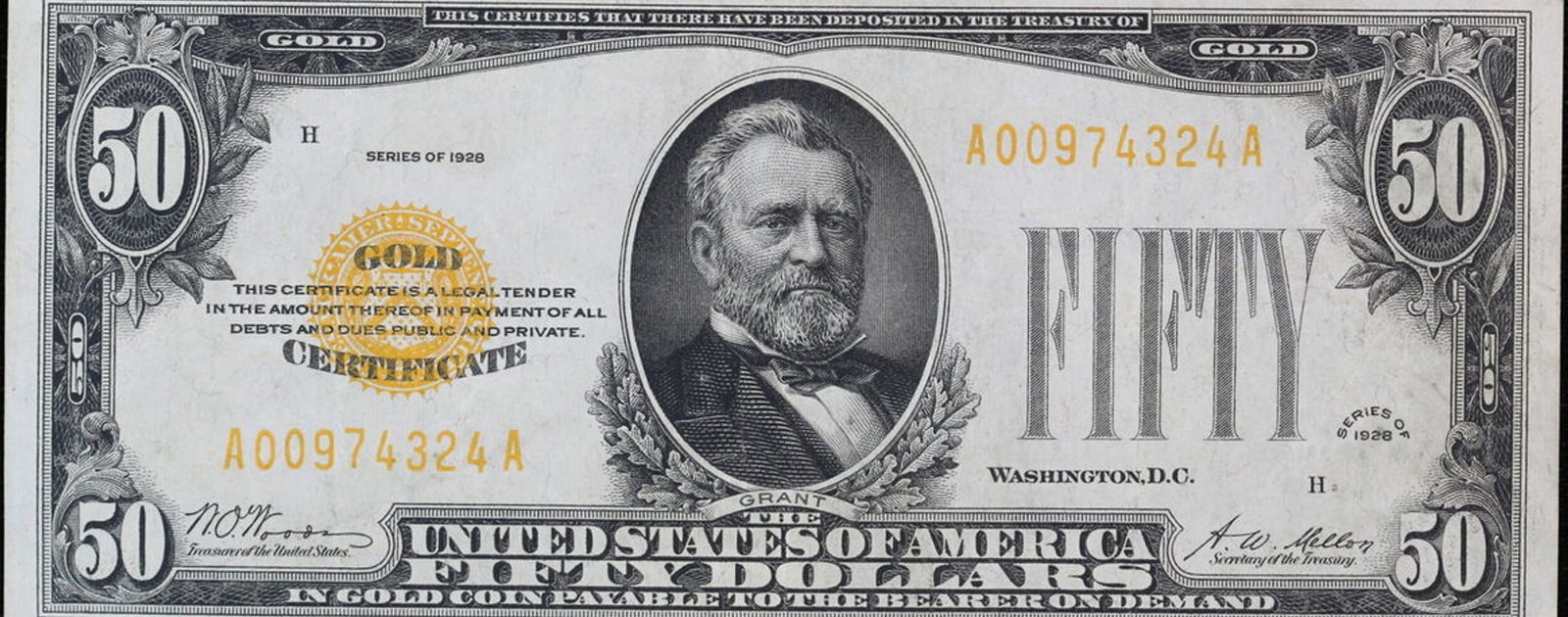Gold certificates were once a popular way to hold and trade gold without physically possessing it. These certificates represented ownership of a specific amount of gold, making it easier to transfer large sums without the hassle of moving heavy metal.
Issued by the U.S. government and some private banks, gold certificates played a significant role in the financial system until the mid-20th century. Understanding what a gold certificate is can give you fascinating insights into historical financial practices and the evolution of currency. Dive into the world of gold certificates and discover how they shaped the economy and influenced modern financial instruments.
Gold In History
Gold has been vital throughout human history, influencing economies and cultures for millennia. Here’s a look at
gold’s significance across different eras.
Ancient Egypt
In ancient Egypt, gold was extensively used for jewelry, adornments, and various artifacts. Egyptians valued gold not only for its beauty but also for its perceived divine attributes. They did not refine gold to increase its purity, so their gold often contained significant amounts of silver. Gold artifacts from ancient Egypt include beads, intricate jewelry, and items used in temple and funerary rituals.
Roman Empire
The Roman Empire utilized gold in multiple forms, most notably through issuing gold coins such as the Aureus, introduced around 50 B.C. These coins, known for their beauty and durability, often featured engraved portraits and were highly sought after by collectors. In addition to coins, Romans used gold leaf and gilded glass in jewelry, showcasing their advanced craftsmanship.
Modern Day
In modern times, the concept of gold certificates emerged as governments and financial institutions issued these documents to guarantee ownership of a specific amount of gold. This practice allowed individuals to trade and store gold without physically holding it. Gold certificates represented a pivotal step in the evolution of currency, contributing to modern financial instruments and practices around
paper currency development. The transition from physical gold to certificates facilitated more secure and efficient gold trading.
Understanding gold’s historical significance across these eras provides insights into its enduring value and influence.
What Is a Gold Certificate?
A gold certificate represents a claim for a specific dollar value of gold or gold bullion deposited in the US Treasury. These certificates functioned as a form of paper currency, making gold transactions more convenient and secure.
Why Were Gold Certificates Made
Gold certificates were authorized in 1863 during the Civil War to transfer gold without moving it physically. Initially issued in 1865, these certificates could be redeemed in gold at a rate of $20.67 per troy ounce. The convenience of using paper currency instead of physical gold spurred their adoption.
Large Size Denominations
Large-size gold certificates, issued from 1865 to 1928, typically came in higher denominations. This made them practical for large transactions, reducing the need for physically handling significant amounts of gold. Collectors often seek these large-size notes due to their historical significance and unique design.
Small Size Denominations
Smaller-sized gold certificates were introduced to facilitate everyday transactions. These notes were more manageable for individuals and small businesses, democratizing access to gold-backed paper currency. While less common than their larger counterparts, small-sized gold certificates still played a crucial role in the economy.
Using gold certificates allowed individuals and businesses to leverage the security and value of gold without the logistical challenges of physical gold storage.
Are Gold Certificates Legal Tender Today?
Gold certificates are legal tender. You can redeem them at any financial institution for their face value in equivalent current coin or paper money. Initially used to represent specific claims on gold bullion deposited in the United States Treasury, gold certificates facilitated large transactions without physically moving gold.
While you can’t exchange gold certificates for gold coins or gold bullion anymore, their status as legal tender remains. Financial institutions recognize the paper currency value of these certificates despite the fact that once a certificate is redeemed, it gets canceled by punching a series of holes that spell “CANCELED,” rendering it non-redeemable at face value.
Factors like denomination, series, and signatures determine the value of a gold certificate. Denominations range from $10 to $100,000. Specific denominations and series can influence the collectibility and worth of gold certificates beyond their face value, appealing to collectors and investors interested in paper currency history.
Gold Certificates & Paper Currency Collectors
Gold certificates offer significant interest to
paper currency collectors due to their historical value and unique features.
Why Are Gold Certificates Valuable?
Gold certificates hold value not only for their historical significance but also for their unique physical attributes. Issued between 1865 and 1933, these certificates feature distinct design elements such as orange-colored backs, gold-colored U.S. seals, and portraits of historical figures. Collectors value them based on factors like denomination, series, and condition, with some certificates reaching prices far above face value. For example, rare denominations or pristine condition certificates can fetch thousands of dollars in the numismatic market.
Understanding the History of Gold Certificates
Gold certificates offer a fascinating glimpse into the past, reflecting a time when paper currency was directly tied to precious metals. Their unique designs and historical significance make them highly sought after by collectors and investors alike. Whether you’re a history enthusiast or a numismatic collector, understanding the evolution and value of gold certificates can enrich your appreciation of American financial history. As you delve deeper into this topic, you may find that these certificates are more than just pieces of paper; they’re tangible connections to a bygone era.


![[Most Recent Quotes from www.kitco.com]](http://www.kitconet.com/images/sp_en_8.gif)